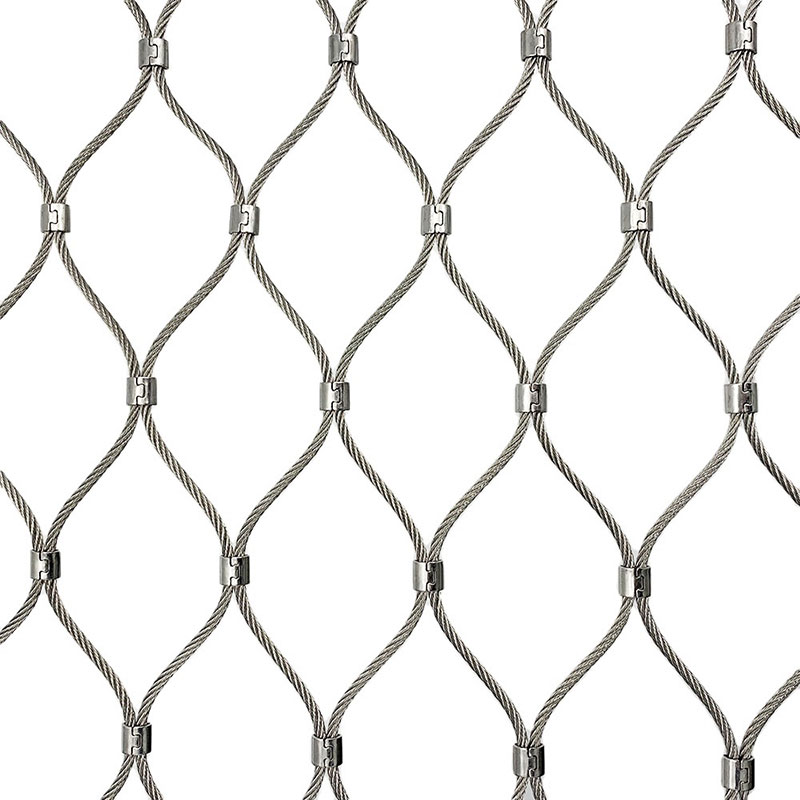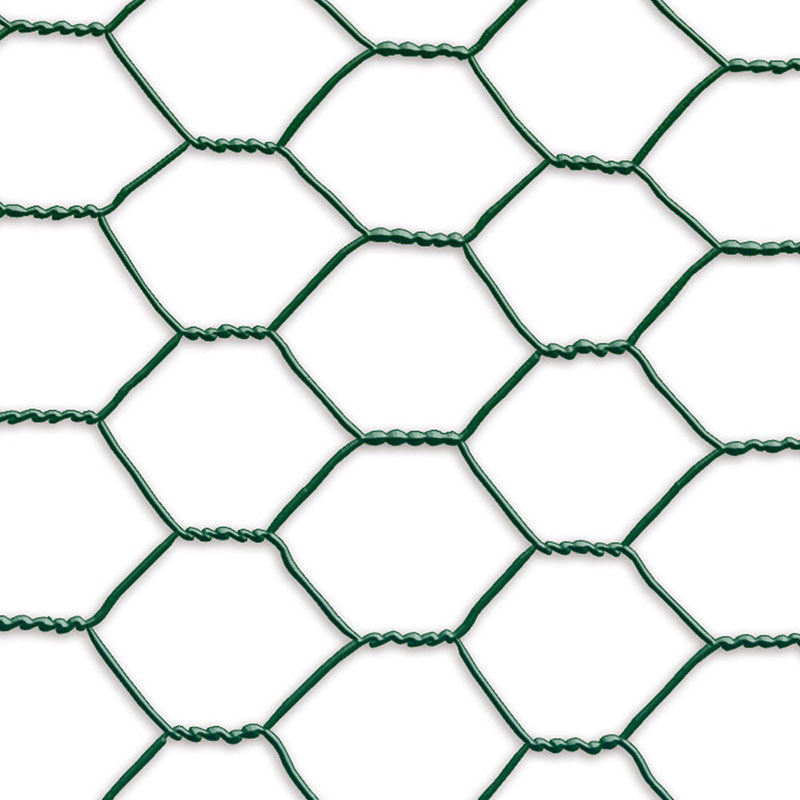By Meghan Wentland | Updated Feb 16, 2023 5:37 PM
We may earn revenue from the products available on this page and participate in affiliate programs. Stainless Steel Crimped Mesh

Many articles relating to curb appeal tend to highlight front entryways, and there’s often a focus on residential entry doors that have no screen or storm door. The look is open and appealingly welcoming, but the door typically must be kept closed on beautiful breezy afternoons or mosquitoes or other pests may take up residence in the home. Similar articles may show back doors leading to decks and patios with retractable or magnetic screen doors, often featuring a welcoming host or hostess bearing a tray of drinks and snacks. These kinds of doors have their uses: In warm weather when homeowners host a get-together, these doors are ideal to keep insects out and let cool breezes in without the continuous need to adjust a slamming screen door or install one of the best screen door closers for easier closing. They’re easy to purchase—screen doors from Lowe’s or Home Depot screen doors are often in stock for same-day pickup in a variety of sizes—and installing a decorative or ventilation screen door is a straightforward DIY project for those who know how to install a screen door. But what they don’t offer is insulation from cold or hot weather—or security. For that, homeowners may consider installing a screen door made of strong material and with added security features in front of the entryway security door.
Curb appeal is important both to the resale value of the home and to how it feels to live inside, and securing a home from intruders can be a delicate balance. Most homeowners want to protect their property, but they don’t want to cover their doors and windows with unattractive iron bars to do so. Doors and windows are typically the most vulnerable points in a home’s exterior, so it makes sense to add security there. Strong security doors on the front and back entryways are good places to begin, but the flimsy aluminum or easily shattered full-view glass screen door doesn’t add much in terms of security. There are, however, a number of ways to improve the security of a screen door and add to both the appearance and the safety of the home.
A security screen door provides a barrier that potential intruders need to get through in order to access the main entry door, and it may provide enough of an obstacle that the intruder doesn’t continue to attempt the break-in. In some cases, a screen door that appears strong can prevent a savvy burglar from even trying to break in. To function well, a secure screen door needs to be installed precisely, and it should include features such as deadbolts, long strike plate screws, and interior hinges, all of which makes this a difficult DIY project. And if the primary reason for the screen door is security, it makes sense for the homeowner to pay the extra cost to have a professional measure and install the door so it’s more likely to withstand any attempt to break in. A quick search for “screen doors near me” will produce a list of local showrooms where homeowners can go to check out security storm doors and screen doors, and at The Home Depot, storm doors are in stock year-round.
When purchasing a new screen door, customers will be faced with a series of decisions that seem small but can make an enormous difference in terms of security. The material from which the screen is made is one of these. Most people haven’t spent much time thinking about screens, but they’re available in a variety of materials. Vinyl screens can be almost invisible and are easy to cut and custom fit. Aluminum screens are flexible and can be used for doors, windows, and other garden projects, and they’re less prone to tearing than vinyl. Stainless steel screens are less flexible and workable, but they’re extremely durable, hard to cut or punch through, and resist corrosion and rusting. The strength and durability of stainless steel screening makes it ideal in a screen door, as it provides a stronger obstacle to intruders who may try to push or punch through the screen to access the inner door.
If the existing door is strong but has a damaged or torn screen or a screen made of less-secure material, it’s easy for a handy homeowner to replace the patio door screen or front door screen with a roll of stainless steel mesh screening and a few supplies from a local home improvement store. The method will vary based on the construction of the door itself, but it’s a task that doesn’t take long and increases the strength of the door considerably. A professional can also perform this task to ensure the mesh screening has been properly installed for maximum security.
Stainless steel screens are a bit more expensive than other materials, and they can be difficult for DIY homeowners to work with. This material is sharp and tough to cut, which is what makes it secure, but it can also make it difficult and dangerous to work with. However, the investment is well worth the extra layer of security it adds to a home without looking significantly different from other materials.
Screen doors are only as strong as their frames; the frame material houses the plate that receives the deadbolt, so it is imperative that the frame be strong enough to withstand an attempt to kick through the lock or pry the door out of the frame. It won’t matter if the lock is strong if the frame breaks apart the moment it experiences pressure. Some security screen doors come with aluminum or metal alloy frames. While metal screen doors are stronger than wood, they are likely to give way when forced unless the material is extremely thick. Steel, on the other hand, is stronger and less vulnerable to bending even when it’s only 2 to 3 inches wide, allowing the door to be strong without giving the impression that the home is a prison or fortress.
If the existing door itself is strong, adding a steel strike plate or a steel reinforcing plate around the deadbolt and the hinges can reinforce frames made of less-sturdy materials. Interior entry doors often have wood frames, so they can be adjusted to fit the existing home structure. Contractors and homeowners can add metal plates around the deadbolt and reinforce the strike plates to make it more difficult for the deadbolt to be torn through the wood framing material without also ripping out long screws securing the metal plates—a job that is difficult enough that most thieves will give up before they’re successful. This strategy can also be applied to screen doors to add security and strength. In addition, steel plates can be installed around the hinges of the screen door to make it difficult to pry the door open from that side when a criminal discovers that the lock is secure.
Darkness and shadows are an intruder’s best friend. They conceal and mask activity, making it possible for a skilled intruder to approach a door and break in quietly without attracting attention. One of the best ways to improve front door security is to prevent it from being tested in the first place. Homeowners can make it so unappealing that intruders don’t even bother to try. Bright fixtures that draw the appreciative eyes of passersby and flood the entryway with light combined with motion-sensor lights that flash on to add extra light with movement may be enough to convince a potential burglar that yours is not the house to break into. The lighting will cause people walking or driving by to potentially notice and pay attention to a thief’s actions.
Lighting is an important part of a screen door security upgrade, but it can only help where it’s allowed to shine unimpeded. Thick shrubbery or trees that press up against a front step or fully conceal the area alongside the front door offer shadowed hiding places for intruders while they prepare their move on the door. Even with good lighting, neighbors and passersby can’t see someone tucked behind a bush while waiting to mount an attack. Homeowners can prune back the shrubs or plant lower foundation plantings and narrow, short trees that aren’t heavily leafed near the doors; the landscaping can still be very attractive without offering criminals an easy hiding place.
Motion-sensor lighting is a great start to a security plan—it can “see” a suspicious person moving around in a place they shouldn’t be and draw attention to them. However, a more complete security system, which isn’t any more difficult to install than motion sensors, can add peace of mind and buy the home’s residents time to address the situation if someone does try to break in. Contemporary home security systems can work through a home’s existing Wi-Fi, and they can be as simple as a few adhesive door and window sensors and a doorbell camera or as elaborate as a networked system of cameras, lights, sensors, alarms, and professional monitoring. Some home security companies encourage DIY installation, while others focus on the benefits of professional equipment installation, especially in circumstances where equipment needs to be installed on roofs or eaves outdoors.
Nearly all home security systems can be controlled and monitored through a smartphone app (in addition to a control keypad within the home), and some can be tied into a smart-home system or home assistant such as Google Assistant, Siri, or Amazon Alexa devices. The warning notifications that pop up through the apps can give residents precious moments to get to safety and call authorities if a criminal attempts to break in, and can let residents sleep more peacefully knowing that their home is protected.
There are many ways homeowners can enhance the security of their screen door, from choosing sturdy and strong models to reinforcing the metal around the strike plate, deadbolt, and hinges. This can go a long way toward discouraging a potential intruder from attempting a break-in or making it likely that any thief will become frustrated and leave before they even get to the interior front door. Adding lighting, keeping the view of the entry area unobstructed by landscaping, and adding one of the best security systems (such as Vivint, ADT, Frontpoint, and SimpliSafe) will make the attempt even less appealing for criminals, and it can help keep the home’s property and residents safer.
Articles may contain affiliate links which enable us to share in the revenue of any purchases made.
Registration on or use of this site constitutes acceptance of our Terms of Service.

Buckle Wire © 2023 Recurrent. All rights reserved.